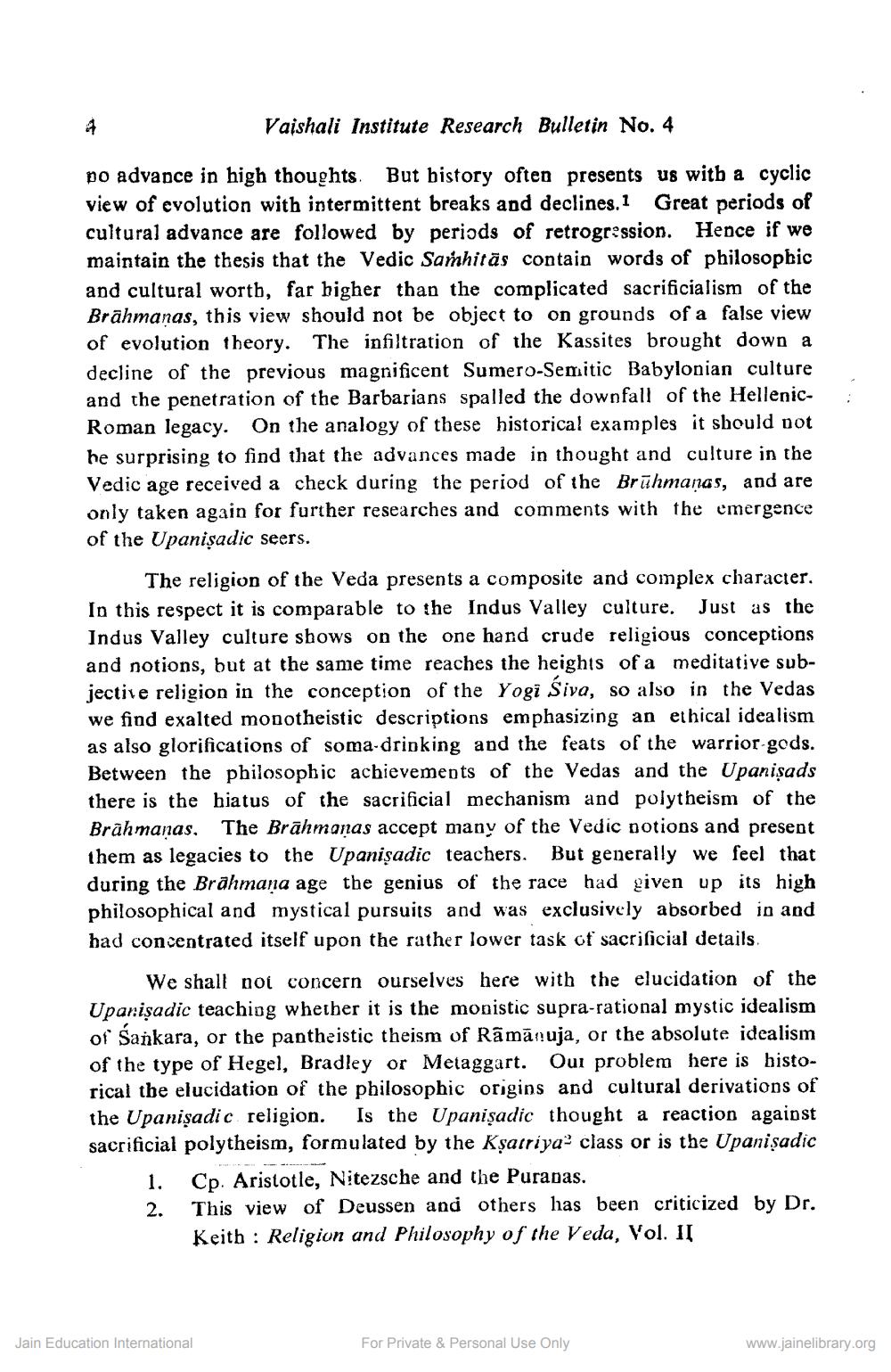________________
Vaishali Institute Research Bulletin No. 4
po advance in high thoughts. But bistory often presents us with a cyclic view of evolution with intermittent breaks and declines. 1 Great periods of cultural advance are followed by periods of retrograssion. Hence if we maintain the thesis that the Vedic Samhitās contain words of philosophic and cultural worth, far higher than the complicated sacrificialism of the Brāhmanas, this view should not be object to on grounds of a false view of evolution theory. The infiltration of the Kassites brought down a decline of the previous magnificent Sumero-Semitic Babylonian culture and the penetration of the Barbarians spalled the downfall of the HellenicRoman legacy. On the analogy of these historical examples it should not he surprising to find that the advances made in thought and culture in the Vedic age received a check during the period of the Brühmanas, and are only taken again for further researches and comments with the emergence of the Upanisadic seers.
The religion of the Veda presents a composite and complex character. In this respect it is comparable to the Indus Valley culture. Just as the Indus Valley culture shows on the one hand crude religious conceptions and notions, but at the same time reaches the heights of a meditative subjective religion in the conception of the Yogi Siva, so also in the Vedas we find exalted monotheistic descriptions emphasizing an ethical idealism as also glorifications of soma-drinking and the feats of the warrior gods. Between the philosophic achievements of the Vedas and the Upanisads there is the hiatus of the sacrificial mechanism and polytheism of the
rahmanas. The Brāhmaṇas accept many of the Vedic potions and present them as legacies to the Upanisadic teachers. But generally we feel that during the Brahmana age the genius of the race had given up its high philosophical and mystical pursuits and was exclusively absorbed in and had concentrated itself upon the rather lower task of sacrificial details
We shall not concern ourselves here with the elucidation of the Uparişadic teaching whether it is the monistic supra-rational mystic idealism of Sankara, or the pantheistic theism of Rāmānuja, or the absolute idealism of the type of Hegel, Bradley or Metaggart. Our problem here is histo
cal the elucidation of the philosophic origins and cultural derivations of the Upanişadic religion. Is the Upanişadic thought a reaction against sacrificial polytheism, formulated by the Ksatriyaclass or is the Upanişadic
1. Cp. Aristotle, Nitezsche and the Puranas. 2. This view of Deussen and others has been criticized by Dr.
Keith : Religion and Philosophy of the Veda, Vol. II
Jain Education International
For Private & Personal Use Only
www.jainelibrary.org




